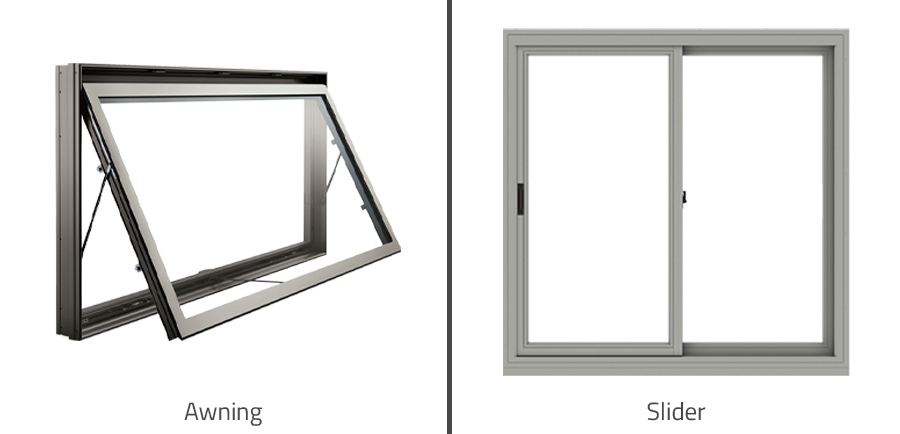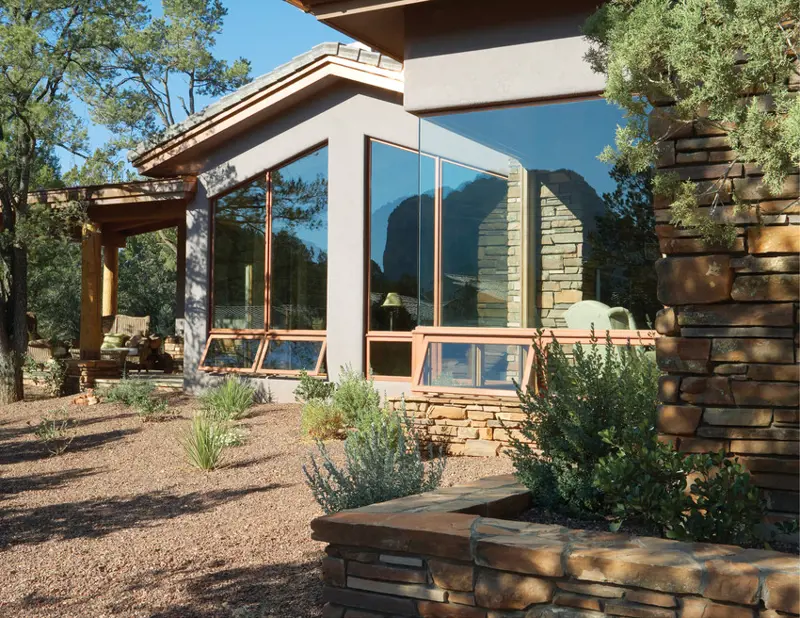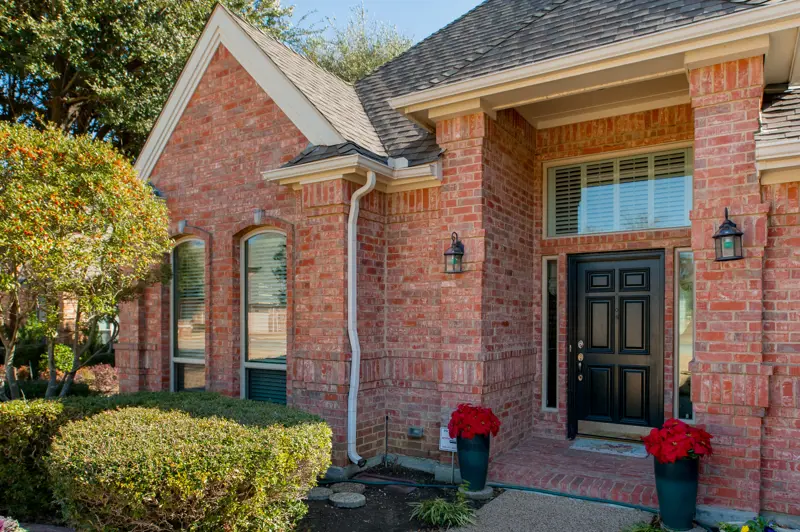
Are Awning Windows More Efficient Than Sliding Windows?
Choosing the right windows for your home when you are looking for replacements can be difficult. Hopefully, you haven't had to replace most of your windows for many years and might be taking a new look into what options are currently on the market.
Two common window styles in American homes include awning windows and sliding windows. When it's time for replacement windows, how do you choose between awning windows and sliding windows?
Awning Windows vs. Sliding Windows

Awning windows are windows that open along a hinge at the top of the window. When they open, they swing outward from the bottom. The shape they take resembles an awning angling downward, hence the name. This angle allows them to offer a home increased ventilation even in rainy weather as the awning angle prevents water from coming inside. They typically open via a crank that is placed at the bottom interior of the window frame. Some models push outwards as well. Awning windows have a single seal around the exterior of the frame.
Sliding windows are another one of the most common styles for windows in the U.S. They are long-lasting and effective, allowing ventilation and increased light without taking up any space outside the wall. You can find sliding windows that are fixed on one side with the opposite panel moving with ease. You can also get sliding windows with two operable sash, increasing the ventilating abilities of the window. This style opens horizontally in the window track, not requiring the use of a crank or handle.
See examples of windows available from Brennan Enterprises.
Are Awning Windows More Energy Efficient Than Sliding Windows?
Awning windows are more energy-efficient than sliding windows. The reason for this is that they only have one seal on the exterior of the frame. When the window gets cranked or pulled shut, the seal can completely connect and let very little air in or out, no matter the temperature.
Sliding windows, in contrast, can never get a completely closed seal. Some seals run all the way around each of the window panels. The sides can connect securely when the window gets shut and locked securely. However, the seals along the runners can never get tighter without restricting or preventing the window's movement. They are one of the least energy-efficient options out there, and the difference will be felt more so during cold seasons.
If you are set on sliding windows or have a space available in which only they will work, ask your window retailer about energy-efficient glass options. The type of glass in your window makes the biggest difference in the window unit's overall energy-efficiency.
Should I Get Awning or Sliding Windows for My Home?
Part of the decision to get awning or sliding windows is made by the type of space available for the window. Other considerations include additional window characteristics, laid out in more detail below.
Pros and Cons of Awning Windows
Awning windows may be more energy-efficient, but what else do they have to bring to the table, so to speak?
- Awning windows increase ventilation even during rainstorms.
- They provide an unobstructed view.
- Awning windows are typically low cost.
- They are the most energy-efficient choice.
- Security is enhanced with awning windows.
- Awning windows obstruct traffic outside.
- They can be more difficult to clean.
- Their crank mechanism requires more maintenance.
- Awning windows do not aid in emergency exit situations.
Pros and Cons of Sliding Windows
Sliding windows might not have as much to offer in the energy-saving game, but they do have other characteristics to consider.
- Sliding windows generally fit into a larger window space, offering in more light.
- These windows increase ventilation.
- Sliding them is easy since it doesn't require a fight with gravity.
- They do not protrude outside.
- Sliding windows are not very energy-efficient.
- The gap between seals can cause the windows to rattle during storms or heavy traffic.
- There are not as many variations on the color and suitability of the frame.
- Sliding slots on the bottom tend to fill with dirt, making the seal even worse.
Choosing between windows that fit well into an opening can be difficult. If you live in North Texas and need further assistance with your window project, contact Brennan Corp.
Oops!
We don't currently serve your area but do want to help you plan your project. Try our Build & Price tool to get an idea of window & door costs within DFW. Your area may be higher or lower but at least you'll have some idea of the price.
Thanks for stopping by.







